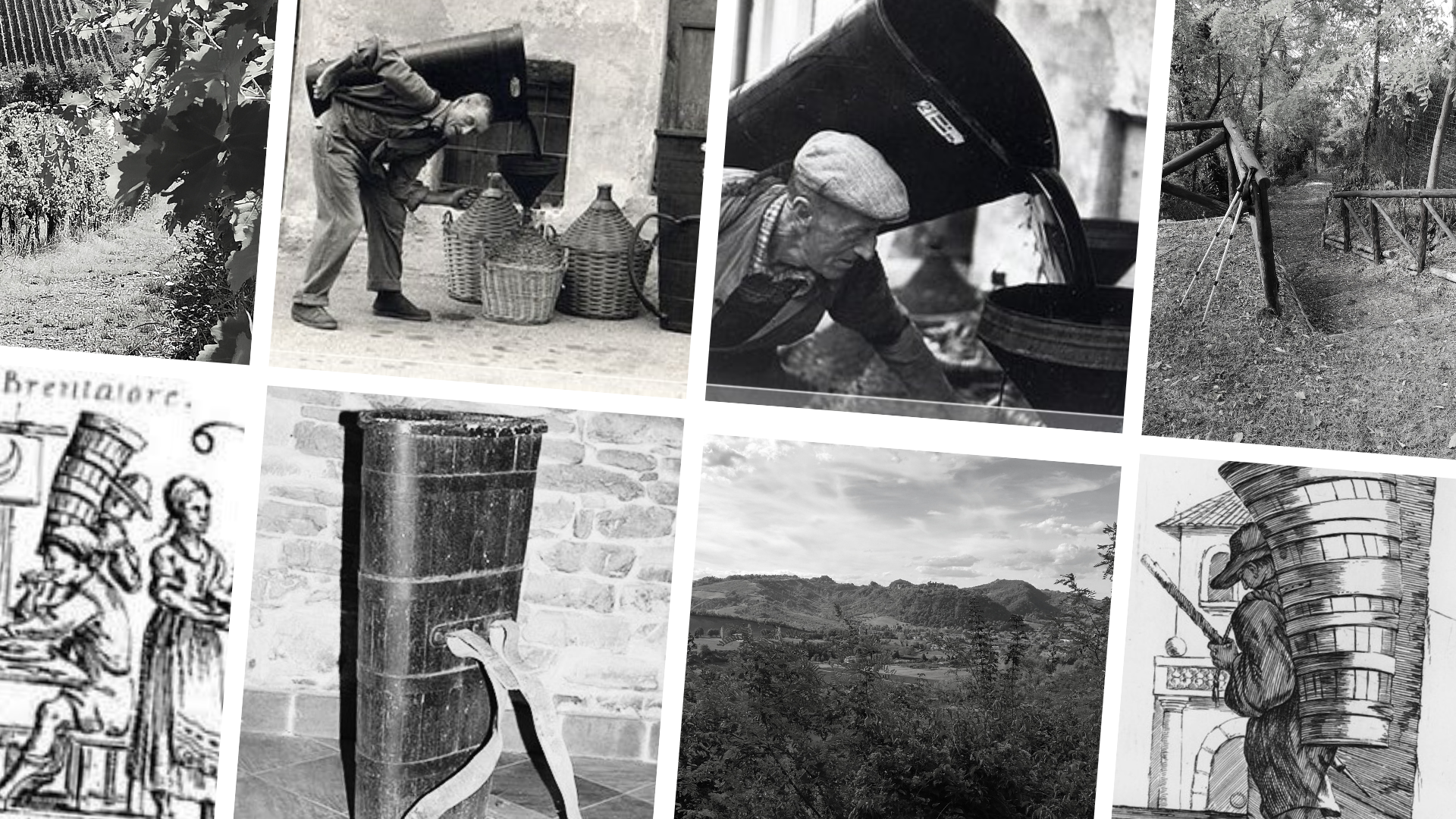
HISTORY OF THE BRENTATORI
The Via dei Brentatori has ancient origins that stretch back to the birth of the trade guild from which it takes its name. To best describe this path, we must start with the Brentatori themselves: who were they and why did they have a whole route dedicated especially to them?
The Brentatori were a guild founded in 1250, known as the “Compagnia dell’Arte dei Brentatori”, which was later legally recognized in 1407.
Their task was to transport wine in containers known as “Brente”, which they carried on their backs. In addition to transportation, the Brentatori also had the task of tasting the wine to certify its quality. Indeed, they were considered great wine connoisseurs. They were also charged with another important task, this time in the role of public service: the Brente were called upon in emergencies to carry the water needed to put out fires. Whenever the alarm was sounded, the Brentatori would run to the site of the fire with their Brente still on their backs, but this time full of water.
The Compagnia dell’Arte dei Brentatori, like all guilds, was suppressed in the Napoleonic era of 1800 and wasn’t revived until 1970 (with headquarters inside the Rocca dei Bentivoglio in Bazzano), reconnecting the modern era to its original ideals.
To carry out their task, the Brentatori had a dedicated road they could use to bring wine from the countryside into the city of Bologna. However, during the 13th century, the area was often susceptible to raids by troops from Modena, making the route unsafe. The Municipality of Bologna then decided to start the construction of a new route along the hills so the Brentatoris could safely transport the wine produced in Monteveglio, Oliveto, and Zappolino. Thus, the Via dei Brentatori was born, connecting Monteveglio to Zola Predosa through the Bolognese hills, and eventually becoming absorbed into the local road network.
The Compagnia dell’Arte dei Brentatori, with the goal of maintaining the ideals of its ancient role, continues to exalt wine and the territories as elements that are closely linked to the traditions and history of each place and population, through a common thread of friendship, union, and knowledge that stretches to distant countries, as seen by the delegations the Brentatori have opened in Switzerland, Finland, and Oregon.
Photo source: https://www.compagnia-arte-brentatori.org/

